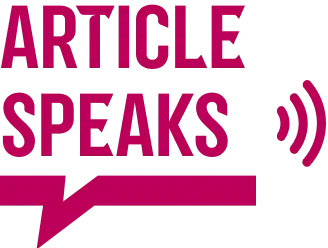Social Media Misinformation Exposes What You Don’t See
Lily Carter November 7, 2025
Explore how misinformation on social media spreads faster than ever. This in-depth guide uncovers drivers behind misleading news, the impact on public opinion, and practical ways individuals and organizations respond to false information online.
Why Misinformation Thrives on Social Platforms
Every day, billions scroll through feeds across platforms like Facebook, X, Instagram, and TikTok. Underneath the vibrant posts and trending stories is a less visible force: social media misinformation. Why does false information catch on so easily through these platforms? One reason is the algorithms themselves, optimized to boost content that sparks strong emotional reactions and rapid sharing. Sensational headlines or emotionally charged claims grab attention much more than dull fact-based updates, giving misinformation a viral advantage. Studies indicate that humans are more likely to pass along engaging or shocking posts, especially when they align with beliefs or concerns they already hold.
Another element driving the pervasiveness of misinformation on social platforms is the speed at which content travels. Social media networks erase traditional barriers that once slowed down information transfer, such as editorial checks and formal news reporting processes. Now, any user becomes a potential source, capable of sending content viral within minutes. Peer-to-peer sharing creates webs of trust, encouraging more people to believe news shared by friends or influential accounts. The absence of robust content verification and the tendency for echo chambers intensify the challenge, as individuals may encounter only sources that confirm their worldview.
The platform monetization models sometimes inadvertently encourage misinformation as well. High engagement means more advertising revenue, so posts that draw clicks and comments are promoted. Many users, especially younger audiences, view trending topics or viral videos as inherently credible, increasing the opportunity for rumors, doctored images, or fabricated stories to gain legitimacy. Social platforms grapple with the balance between free expression and the need for preventive measures—often finding solutions more complex than anticipated (Source: https://www.pewresearch.org/internet/2021/10/06/how-americans-navigate-the-modern-information-environment/).
The Real-World Impact of Misinformation
Online misinformation doesn’t stop with the internet. It seeps into conversations in homes, workplaces, schools, and even voting booths. One striking example is the influence of misleading health advice during major public health crises. Authoritative bodies like the CDC and WHO noticed a surge in false claims around vaccines, treatment efficacy, and disease origins. These digital rumors often tangled with political debates, influencing both personal choices and government responses (Source: https://www.cdc.gov/mmwr/volumes/69/wr/mm6936a5.htm).
Misinformation has profound implications for democratic societies. When manipulated news targets elections, referendums, or other political events, it may undermine faith in public institutions. Voters misled by viral posts are susceptible to forming opinions based on incomplete or inaccurate data. This, in turn, erodes the foundation of informed consent that underlies strong civil institutions. Recent research reveals that even after misinformation is debunked, false ideas can linger—a phenomenon called the “continued influence effect.”
The reach of viral misinformation extends even further, generating real economic impacts on brands, small businesses, and individuals caught in digital crossfires. Financial scams, fabricated celebrity news, and manipulated investment tips may reach millions before detection. The damage to professional reputations, market confidence, and individual well-being is difficult to reverse, as the internet rarely forgets. Addressing such consequences calls for strategies that go beyond fact-checking, targeting cultural factors as well as technology itself.
How False News Spreads: From Bot Networks to Viral Videos
Many false stories do not emerge by accident. Coordinated campaigns and automated bot networks are frequently behind the flood of misinformation that plagues news feeds. Automated social media accounts can generate thousands of posts per minute across platforms, overwhelming fact-based reporting and amplifying misleading hashtags. Disinformation operations may also involve the use of deepfakes—artificial intelligence-generated images or videos designed to deceive (Source: https://www.brookings.edu/research/deepfakes-and-artificial-intelligence-the-future-of-disinformation-campaigns/).
Unlike traditional news, the design of digital platforms favors rapid sharing over verification. Disseminators of false news carefully craft their content for maximum engagement—use of provocative visuals, simplified slogans, and hashtags that ride trending topics. Video platforms, where edited clips and manipulated context are common, have seen particular surges in viral hoaxes and conspiracy-driven narratives. The rise of AI-powered content tools makes distinguishing authentic from staged material even harder for ordinary users.
Crowdsourced “fact-checking” has emerged as a grassroots solution, with users flagging questionable posts and raising alerts for community review. Several organizations now verify viral claims and issue public corrections, but the lag between rumor and correction can be significant. Intentionally misleading actors exploit this time gap, maximizing the reach of their content before platforms take action. Automated detection tools—while promising—still struggle with the nuances of context, irony, and regional language variations, underscoring the need for collaborative, multilayered solutions.
Psychology Behind Believing False Information
Understanding why misinformation spreads so effectively requires a look into human cognitive biases. The “confirmation bias” is a leading factor: people instinctively seek out sources that validate their existing beliefs and filter out opposing viewpoints. Social media’s design magnifies this through personalized news feeds and content algorithms. As friends, family, or influencers share news that “feels right,” trust in the accuracy of that information increases—even if it’s unproven.
Psychologists also highlight the “availability heuristic,” which is the tendency to assign truth to information that’s easily recalled or commonly repeated. Viral stories, memes, and hashtags may become so familiar that they shape perceptions, regardless of their factual accuracy. The pressure to react quickly when a topic is trending amplifies the reliance on first impressions, reducing the likelihood that individuals will pause and verify before sharing.
Another powerful driver is social belonging. Many users share posts simply to feel connected within online communities, to signal identity, or to align with peers, regardless of their personal certainty about the content’s accuracy. The viral nature of social news can therefore reinforce false beliefs through peer reinforcement, especially in emotionally charged conversations. Overcoming this requires both critical thinking skills and accessible verification tools within digital ecosystems (Source: https://www.apa.org/news/press/releases/2022/03/misinformation-social-media).
Strategies for Combating Misinformation
Tackling false news online is complex, but leading organizations and researchers have outlined several effective approaches. Content labeling—adding context or fact-checks to questionable posts—has shown promise in steering users towards more accurate views. Many major platforms have also introduced warnings on misleading images or links, sometimes reducing the reach of suspected misinformation until a review is complete. However, debates remain about the balance between transparency and censorship on such measures.
Media literacy programs are equally vital. By teaching users how to evaluate sources, cross-check facts, and identify bot-generated content, schools, universities, and advocacy groups can build long-term resilience. Initiatives like News Literacy Project and university outreach campaigns have begun introducing critical thinking modules tailored for different age groups and communities. In parallel, some governmental and nonprofit agencies are working to strengthen legal frameworks to address purposeful digital deception, particularly in sensitive areas like public health and elections (Source: https://www.justice.gov/opa/pr/justice-department-announces-new-actions-combat-disinformation-and-strengthen-election).
Platform-level reforms are ongoing. Investments in artificial intelligence and human moderation teams help detect false narratives in near real time. Partnerships between news organizations, social networks, and fact-checking groups have produced collaborative databases to monitor and counter active misinformation campaigns. Yet every solution remains a work in progress, requiring vigilance as tactics and technologies evolve.
How Users Can Make a Difference
Every individual can play a part in limiting the spread of online misinformation. Cultivating a habit of healthy skepticism is a strong start: before sharing, pausing to review the credibility of sources is key. Asking simple questions—such as who created the content and whether it has been reported by traditional news—is often enough to halt a rumor in its tracks. By prioritizing accuracy over speed, users contribute to a healthier informational environment.
Engaging with trustworthy news sources helps, too. Reputable outlets maintain rigorous editorial standards and public corrections, offering a stable reference point for evaluating viral claims. Supporting local journalism and subscribing to research-backed publications make it easier to spot stories that are out of context or lack supporting evidence. Digital citizenship includes participation in constructive fact-checking, community flagging, and reporting of suspect content to platform monitors.
Finally, users should understand the emotional pull that controversial content can exert. Recognizing patterns—such as when outrage, fear, or hope drive shares—can prompt reflection before reacting. Building and modeling a commitment to trustworthy sharing is one of the most effective counters to viral misinformation. Many positive examples show that average users, by slowing the spread of questionable news and promoting informed conversation, can foster resilience against digital deception (Source: https://newslit.org/updates/newsliteracy-education-benefits/).
References
1. Pew Research Center. (2021). How Americans Navigate the Modern Information Environment. Retrieved from https://www.pewresearch.org/internet/2021/10/06/how-americans-navigate-the-modern-information-environment/
2. Centers for Disease Control and Prevention. (2020). Health Misinformation and the Use of Social Media. Retrieved from https://www.cdc.gov/mmwr/volumes/69/wr/mm6936a5.htm
3. Brookings Institution. (2020). Deepfakes and Artificial Intelligence: The Future of Disinformation Campaigns. Retrieved from https://www.brookings.edu/research/deepfakes-and-artificial-intelligence-the-future-of-disinformation-campaigns/
4. American Psychological Association. (2022). Misinformation and Social Media. Retrieved from https://www.apa.org/news/press/releases/2022/03/misinformation-social-media
5. U.S. Department of Justice. (2022). Justice Department Announces New Actions to Combat Disinformation and Strengthen Election Security. Retrieved from https://www.justice.gov/opa/pr/justice-department-announces-new-actions-combat-disinformation-and-strengthen-election
6. News Literacy Project. (2023). News Literacy Education Benefits. Retrieved from https://newslit.org/updates/newsliteracy-education-benefits/







